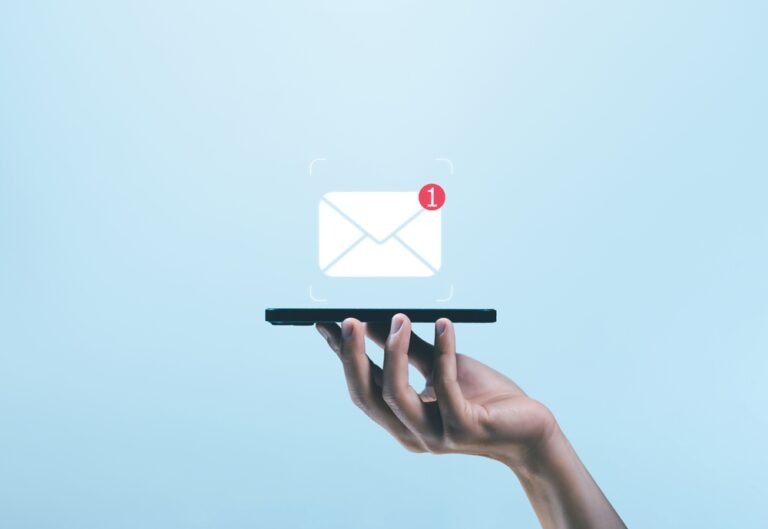What is Cold Email?

Cold email refers to emails sent to individuals or businesses with whom no previous communication has occurred. These emails are usually the first point of contact and are commonly used in outreach campaigns, often aimed at generating leads, informing potential customers, or offering services. Cold emailing is widely used in B2B (Business to Business) marketing strategies and lead generation efforts, aiming to initiate relationships with new prospects. When written with personalization and targeted content, cold emails can achieve high conversion rates and significantly contribute to business growth.
Cold email, while an effective marketing tool, requires the sender to provide relevant and valuable content to the recipient. If not done properly, it can be perceived as spam, which is why it’s crucial to employ appropriate strategies and comply with laws to avoid it.
The Difference Between Cold Email and Spam Email
The difference between cold email and spam email is one of the key elements that should be understood when implementing cold email strategies. Spam email refers to unsolicited emails, often sent in bulk, that users generally don’t want and have not opted into. These emails are typically impersonal and unrelated to the recipient’s needs, often with questionable content or suspicious links. Spam emails are usually flagged by spam filters and never reach the recipient’s inbox.
On the other hand, cold email is more strategic and personalized. It is sent with the intention of establishing a professional relationship or initiating a business opportunity. Cold email is typically tailored to the recipient’s interests and needs, which makes it more relevant and less likely to be marked as spam. However, both cold and spam emails can share similar characteristics, so it’s important to ensure that cold emails are personalized and provide value to the recipient to avoid being flagged.
Purposes of Cold Email
Cold email is often used as a tool to help businesses grow their customer base and increase leads. It is a direct communication strategy to inform recipients about a product or service that they might be interested in. The primary purposes of cold email include:
- Lead Generation: The most common use of cold email is to establish communication with potential customers or clients. These emails are often the first step in building a relationship and can encourage recipients to take further action, such as booking a meeting or signing up for more information.
- Sales and Offers: Cold email is also used to pitch offers or products to new prospects. It provides an opportunity to introduce products or services that might appeal to the recipient and lead to a sale.
- Collaboration and Partnerships: In B2B contexts, businesses may use cold email to reach out to potential partners or collaborators, to explore opportunities for joint ventures or shared projects.
How to Write an Effective Cold Email?
Writing an effective cold email is essential for achieving high conversion rates. Here are some tips for crafting a successful cold email:
- Personalization: Start with addressing the recipient by name and tailoring the content to their interests or business needs. Using the recipient’s company name or mentioning something specific about their industry shows that the email is not a generic mass message.
- Compelling Subject Line: The subject line is crucial for encouraging the recipient to open the email. Keep it short, clear, and enticing. A good subject line could be something like “How We Can Help [Company Name] Save Time and Increase Revenue.”
- Clear Value Proposition: In the body of the email, explain how your product or service can solve a specific problem the recipient faces. Make sure to highlight the benefits of working with you.
- Concise and Direct: Keep the email short and to the point. Avoid lengthy paragraphs and unnecessary information. Busy professionals appreciate brevity.
- Call to Action (CTA): Conclude your email with a clear and actionable next step, such as scheduling a call or requesting a demo.
Compliance with Laws and Regulations in Cold Emailing
When sending cold emails, it is essential to follow legal regulations to avoid being flagged as spam. Privacy laws like GDPR (General Data Protection Regulation) in Europe or CAN-SPAM Act in the United States govern the use of personal data and the sending of unsolicited emails. These laws ensure that recipients have given consent for marketing communications, and that businesses respect their privacy. Therefore, it’s important to get the recipient’s permission to send emails and to include an unsubscribe option for easy opt-out from future communications.
Increasing Cold Email Success Rates
The success rate of cold email campaigns can be improved with proper strategies. Here are some ways to increase your chances of success:
- Segmentation: Segment your email list based on factors like industry, company size, or past behavior to send more relevant and targeted emails. This will increase the likelihood of the recipient engaging with the email.
- Testing and Optimization: Regularly test different aspects of your cold emails, such as subject lines, email body content, and CTAs. Use A/B testing to understand what resonates with your audience and adjust your strategy accordingly.
- Engagement Strategies: Focus on building relationships with your recipients by offering value and not just promoting a product. This will help create a long-term connection and improve engagement over time.
Cold Email Tools and Automation Systems
One of the major advantages of cold email is the use of automation tools. Email automation software can help streamline the process of sending cold emails. These tools allow you to schedule and send personalized emails to multiple recipients, saving time and reducing errors. Automation systems also enable you to track the effectiveness of your campaigns and make adjustments in real-time. These systems can be integrated with customer relationship management (CRM) tools, allowing for better lead management and follow-up.
By using cold email automation tools, businesses can also personalize their emails more effectively. This helps increase engagement, as customers are more likely to respond to personalized messages that address their specific needs and concerns. Additionally, automation allows businesses to send timely follow-ups, improving conversion rates and boosting sales.
Cold email, when used correctly, can be a powerful tool to generate leads, build relationships, and drive sales. By understanding your target audience, personalizing your emails, and using automation, businesses can see significant results from their cold email campaigns. It’s important to continuously monitor and refine your strategy to ensure long-term success.


